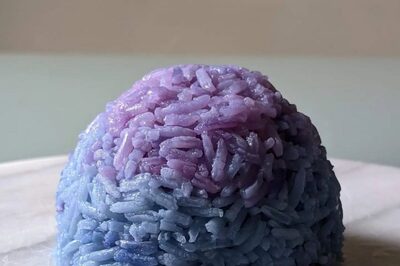
views
Libby Nance, Mosquito Abatement District Manager of Moab in Utah, is warning residents to drain or dump standing water on their property due to the presence of a new invasive mosquito known as Aedes aegypti, or the “yellow fever mosquito,” which can carry the Zika virus and yellow and dengue fever.
Zika virus is mosquito-borne, primarily transmitted by the bite of an infected mosquito from the Aedes genus, mainly Aedes aegypti, in tropical and subtropical regions. Aedes mosquitoes usually bite during the day, peaking during early morning and late afternoon/evening.
This is the same mosquito that transmits dengue, chikungunya and yellow fever. Zika virus is also transmitted from mother to fetus during pregnancy, through sexual contact, transfusion of blood and blood products, and organ transplantation.
“No indication that any of these diseases are present in the local population," , The Times-Independent quoted a spokesperson for the Southeast Utah Health Department as saying.
The spokesperson added that the health department would “work with all of the local health care providers and community partners to properly plan for and recognize these diseases should they be introduced into our community at some point in the future.”
According to Libby Nance’s press release the Zika is a “a potentially serious new invasive mosquito species to Moab, now here – it is named Aedes aegypti, (pronounced: A’-deez uh jip’ tie, the common name is: the yellow fever mosquito) , it is a vector of Zika virus, yellow fever, dengue fever, etc.”
Asking people for help, Libby further added, “Please drain or dump any and all standing water on your property,” going on to state, “If you need to provide water for your animals, please do your very best to empty every day and refill.”
Libby further stated, “If you need help, ask a neighbor, a friend, a relative – please do a search of your entire property for any standing water and dump it,” adding that there is a 20 to 40 percent chance of rain on the day of the release, which could complicate things further for them.
Aedes aegypti, prefers to lay her eggs in urban or suburban “micro-habitats”. According to Libby, these include -- outdoor plants with pans under them that collect water; leaky swamp coolers (yes, up in the roof pans too); scummy chicken water/animal water; water that could collect in trash or garbage.
Libby further makes mention of the Aedes aegypti outbreak in Miami in mentioning unlike Miami, where “folks” had to deal with microhabitats such as bottle caps, snail shells, outdoor bromeliad plants, their dry climate helps them in eliminating such areas.
She further asked people to stay tuned to local TV stations and newspapers for more updates.
“The Centers for Disease Control (CDC) are getting involved as soon as the Utah Department of Health formally invites them to help us – they (CDC) are standing by,” she added.



















Comments
0 comment